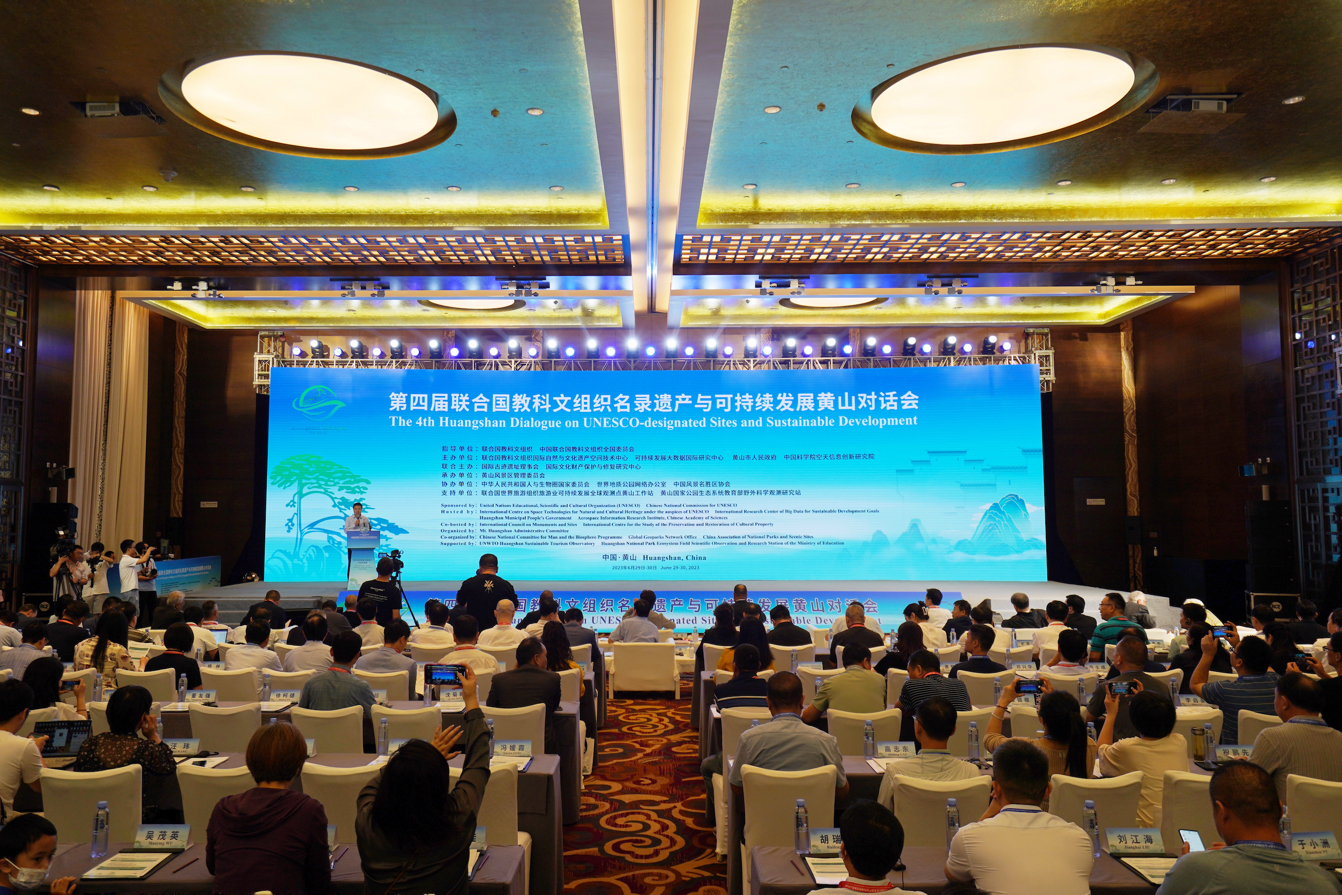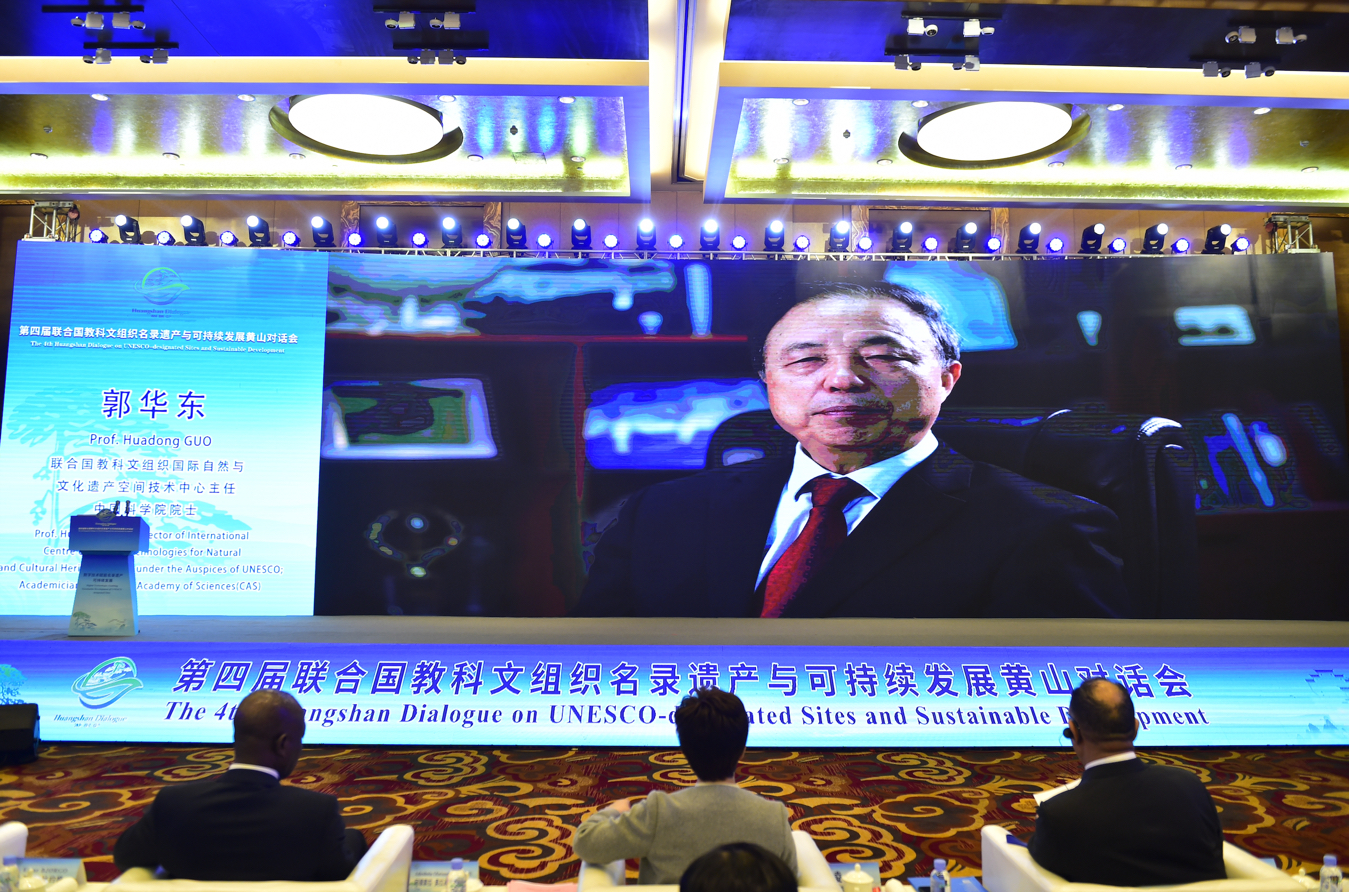4th Huangshan Dialogue on UNESCO-designated Sites and Sustainable Development Opens in China
Jun 29, 2023
The 4th Huangshan Dialogue on UNESCO-designed Sites and Sustainable Development opened at Huangshan City in east China's Anhui Province on June 29, 2023.
Themed "Digital Technologies Enabling Sustainable Development of UNESCO-designed Sites", the two-day event attracted over 200 participants from more than 20 countries and over ten international organizations including the United Nations Educational, Scientific and Cultural Organization (UNESCO), the International Council on Monuments and Sites (ICOMOS), and the International Centre for the Study of the Preservation and Restoration of Cultural Property (ICCROM).

Opening ceremony of the 4th Huangshan Dialogue on UNESCO-designated Sites and Sustainable Development. (Image by AIR)
The Dialogue aims to provide a forum for experts, policymakers, and practitioners to share experiences in the protection and management of more than 2,000 UNESCO-designated sites around the world – World Heritage Sites, Biosphere Reserves, and Global Geoparks, and to build a vision towards both better protection of global heritage sites and enhancing the contribution of these sites towards the implementation of World Heritage Convention and the UN 2030 Agenda for Sustainable Development.
The Dialogue was organized by the International Centre on Space Technologies for Natural and Cultural Heritage (HIST) under the auspices of UNESCO, the International Research Center of Big Data for Sustainable Development Goals (CBAS), the Aerospace Information Research Institute (AIR) under the Chinese Academy of Sciences (CAS) and the Huangshan Municipal People’s Government.
Prof. GUO Huadong, Director of HIST, said that as the first UNESCO category II centre of its kind, HIST has played an important role in assisting UNESCO and its Member States in monitoring and conservation of UNESCO-designated sites and contributed a lot to the effective implementation of the World Heritage Convention and the 2030 Agenda for Sustainable Development.
Guo called for more application of digital technologies in the management and protection of these sites, the promotion of international collaboration on transdisciplinary research, and capacity-building on digital technologies, to better cope with the risks faced by world heritage sites.

Prof. GUO Huadong, Director of HIST delivers an opening speech. (Image by AIR)
In his video message, Dr. QU Xing, Deputy Director-General of UNESCO said that we have long used the space technologies, remote sensing, geographic information system and other application in our designated areas. We have expertise in natural and cultural heritage, in aquatic and ocean science, environmental education and access to information in the ethical application of new technologies and partners like HIST. He thanked HIST for helping use satellite imagery to monitor world heritage sites such as East Rennell in the Solomon Islands and Angkor in Cambodia.
Dr. Webber Ndoro, Director-General of ICCROM said that space technologies have immense potential for contributing towards conservation, management, and sustainable development of world heritage properties. ICCROM and HIST are dedicated to the conservation and management of World Heritage Properties and have recently committed to strengthening collaboration through signing of MOU between the two international organizations.
Lazare Eloundou Assomo, Director of UNESCO World Heritage stressed the importance of using innovative technologies for these UNESCO-designed sites which are so unique and irreplaceable that they should be protected as common heritage of humanity. He added that UNESCO therefore looks forward to strengthening its ties with institutions such as HIST in this area, and to realizing the full potential of these technologies for safeguarding heritage, particularly as we face challenges such as climate change.
Focusing on these UNESCO-designed sites, the Dialogue organized eight sessions featuring following topics: digital conservation, space technologies and methodologies for the monitoring and evaluation, harmonized management, disaster risk reduction, climate change, space archaeology and spatial intelligence in cultural heritage, integration of heritage and culture and high-quality development, heritage education.
A Map titled “Environmental Context of World Cultural Heritage along the Silk Road” was released at the opening ceremony. The map, spotting the spatial distribution of 801 world cultural heritages and mixed heritages along the Silk Road, offers insights into understanding the humanistic and natural background of the heritages along the Silk Road.
The Dialogue released the Recommendations on Climate Action for Heritage Conservation, calling for stakeholders to take proper measures, including utilizing state-of-the-art technologies at hand to reduce the risks as well as negative impact posed by climate change.
The Dialogue also unveiled the “HIST Award on Best Practice in Sustainable Development of UNESCO-designated Sites” to recognize innovative and exemplary efforts by the site managers, related research institutes and other organizations from UNESCO Member States on best practices of digital technologies for the conservation and sustainable development of UNESCO-designated sites.
The Dialogue series took place in Huangshan, a World Heritage Site itself, mark ambitious efforts of HIST by providing a unique platform that bring together policymakers, researchers, and practitioners across the globe to discuss better protection, and promotion of sustainable development of, these sites which are of common importance for present and future generations of all humanity.



News & Events